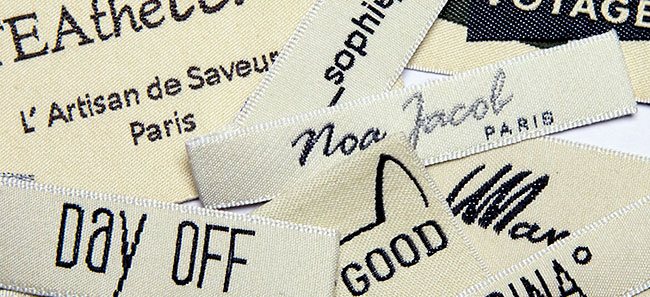Uses of labels:
There are many uses of labels. It guides us for treatment and the materials used in the garments. It helps for recognising the brand name and logo. It also tells us the making process of the garments and accessories. The importance of labels in the garments and accessories business are highly valuable.
The last touch on a designer’s products is often a clothing label. Designer/manufacturers of clothing and accessories invested more time and money making sure their goods were of high quality and that the label reflected the overall product. The attention given to the production is also reflected in the label. One of the first items a potential buyer examines when buying an item is the label. For certain reasons, consumers read the labels and the labels often become “cherry on the top.”
If a customer buys a product, he or she makes an investment. They want to keep their products in good shape. So, they want to know exactly what kinds of fabric it is and how these clothes are to be cared for. The fabrics in garments can be difficult to classify for them. The required treatment could be different from product to product. Labels are the way to include the valuable information. Such as washing instructions, fabric content etc – all these information are essential for a client to decide to buy a product.
For branding:
Labelling has become so necessary that we now only purchase items because of the logo. In our society, the labelling process is at the forefront! Labels are one of the fundamental branding techniques. When buying clothing, the customer first looks at products then labels to decide the brand. The brand and service that the consumer needs are essential to show on the label. A special name, colour, symbol etc are usually included. It is important that it is clear and easy to recognise for the users. A label offers versatility in a brand across a wide range of their designs. Brands and labels constitute one of the most important ways to differentiate products in the market. Branding is difficult without names. A consumer examines the label to find the brand and thereby ensures the consistency of the product.
The creator/manufacturer communicates information to their customer with the help of woven labels, stickers, and tags. They ensure that the customers who buy the goods get correct details. Woven labels give a classic complement to every apparel. Labels for contents and tags describing the ingredients of products. Now a day’s variety of labels are available to give good finish to your products. It all depends on the branding or the target segmentation. Qualities like damask, semi-damask, satin, taffeta are quite popular. The satin sticker is so thin and delicate. We must keep in mind the consumer when selecting the label. Taffeta is stiffer than satin and can stand up to a little bit more. However, the edges of the labels may be steady in both satin and taffeta, causing a characteristic of the material. Semi-damask is a medium-line option for labels. There are many damask qualities nowadays with lower price. Damask is a tight weave label with a soft hand feel, even on edges. It is a good option for luxury wear brands due to its high quality. However, each label has their own specialities. You will have to make a decision based on your product and brand requirements.


